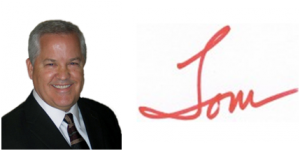 It took you years of hard work to reach the corner office.
It took you years of hard work to reach the corner office.
You worked through multiple assignments to deliver results and overcome challenges. At each career step, your responsibilities increased and so did the expectations. More and more people looked to you to set the strategies and determine the directions to follow.
Now, after all that time, the entire company is yours to lead. You have arrived.
Others look at you and think that you have the most latitude because of your high position. If they only knew the truth. So many things constrain and concern you. The employees look to you for leadership and countless decisions about priorities, promotions and their own job security. Customers constantly want more and on better terms than before. Investors want the share price to increase and their investments to pay off. Analysts want above average growth and a story about ongoing differentiation. Meanwhile, your many competitors only want you to fail and are doing their best to make that happen.
Somehow, you have to orchestrate this complex combination of constituencies and competitors.
There is not one answer to this balancing act. You naturally will integrate inputs from your team and the environment to settle on what seems best. One source of inputs is competitive intelligence. Competitive Intelligence can help you to organize your external perspectives and align your team to compete better. Here are five ways.
- Monitor the environment. The competitive environment is not static. Known competitors are adapting their strategies. Potentially disruptive companies are emerging. Other standards, social, demographic, technology and regulatory trends affect all of the actors. Usually, understanding the future better gives you more confidence to prepare more effectively. Competitive Intelligence systematically monitors market dynamics, significant trends and likely competitors’ responses to frame your strategic options better.
- Establish priorities. You have to get this part right because you cannot frequently change priorities. Of course, many factors affect priorities including knowing the market niches you want to protect and those that you want to attack. Especially when attacking, it is important to know where you need to improve your products, processes or resources. With that knowledge, you can hold someone accountable for the required improvements. Competitive Intelligence supports gaps analysis and closure processes to make sure that the organization is constantly working to overcome important disadvantages.
- Make decisions. Your decision-making is often complex. Where others might see or wish for simplicity, you have deal with a myriad of factors. Your position requires you to make the difficult decisions that affect many people. Thus, organizing frameworks, models and scorecards become essential tools for you. Sorting through issues to find what is most important while deemphasizing the less important is a constant duty for you. Competitive Intelligence provides regularly evaluated market and competitor information and models that highlight critical issues to inform your decision-making.
- Motivate the organization. In competition, it is often best to identify the competitors and the specific challenges that they pose. Properly framed, you can use this information to explain your strategies within your company. Furthermore, you can set competition-based metrics to serve as performance goals. Tangible competitive threats helps link your strategic goals and tactical or operational mindsets of the rest of the organization. Competitive Intelligence helps you to explain competitors better by documenting their strategies, product plans, customer targets and more in specific ways that leads to concrete actions throughout your organization.
- Evaluate strategies. You and your team have set the strategic direction for the company. Regularly, you convene meetings to talk about the progress. Are the strategies working? Are the competitors doing what we expected? Has something about our significant assumptions materially changed? How is each part of the organization functioning to beat the competition? There are multiple important metrics. One of those is how your competition reacts (or does not react) to what you are doing. Competitive Intelligence supports scenarios planning, strategy forecasting and competitor strategy reports by maintaining industry models and competitor profiles.
Your job is difficult but challenging. It helps when you get good and useful inputs. One critical source is a competitive intelligence function that provides information tailored to support your strategies, decisions and role.


[…] This post was mentioned on Twitter by Tom Hawes and Nicolas BLAS. Nicolas BLAS said: A Competitive Intelligence Note to a CEO http://bit.ly/3JcGyf […]
[…] Strategically Thinking » A Competitive Intelligence Note to a CEO […]
[…] A Competitive Intelligence Note to a CEO – by Tom Hawes Share and […]